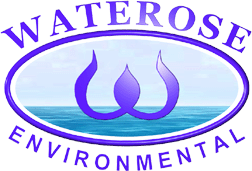 | ||||||
| Articles | Projects | Resume | Cartoons | Windsurfing | Paintings | Album |
Sustainable Development Series: Policy and Legislation
Legal Liability for
Contaminated Sites

by Waterose
Ignorance is bliss, or is it? It may well be until knowledge finds a deeper truth. The industrial revolution and technological development introduced many unnatural chemical substances into the environment without fully comprehending the environmental degradation that could ensue over time as a direct result. As a consequence, special statutory instruments and regulations have evolved to attempt to clean up or remediate polluted or contaminated sites.
The Waste Management Act (WMA) is the most extensive statute in British Columbia (BC) that regulates the control and liability for remediation of contaminated sites. There have been extensive changes in this statute to define contamination and liability for remediation of polluted sites.
Formerly, under Section 22 of the WMA, persons were liable for clean up of polluted land sites if the site was considered dangerous to others or if an authorised person issued a pollution abatement order (Thompson, 1993). Pollution was defined as any substance that could impair the usefulness of the environment. A person was primarily defined as the owner or the person in control of the site or the polluting substance. This ownership definition included lenders, receivers or trustees who were managing the property. The responsible person was wholly liable for the cost to clean up the site regardless of the history of ownership or whom else may have been responsible historically for the release of the polluting substance. This effectively created an owner pay principle or onus on the owner for liability.
There were no provisions for the liability to clean up "orphan sites" which are abandoned sites for which no responsible person or owner can be identified (Thompson, 1993). In 1989, the Canadian Council of Ministers of the Environment introduced a five year plan to remediate highly contaminated orphan sites on a fifty-fifty cost sharing bases between the federal and provincial government. This plan was an interim temporary measure until the existing statutory instruments could be revised.
In some cases, extensive amendments to existing statutes are not passed until the operational regulations are drafted. Such was the case with the extensive revisions in the Waste Management Amendment Act (WMAA) which was passed in 1993, but was not implemented until April, 1997 and only after the Contaminated Sites Regulations (CSR) were drafted (West Coast, 1998: Internet).
The revised WMA provides clearer details concerning contaminated sites, liability, and treatment of orphan sites (WMA, 1998. Internet). In addition, the WMA is the statutory vehicle to enforce the extensive CSR which underwent three major revisions in drafting over a period of four years prior to being approved.
The WMA defines a contaminated site as an area of land, including the soil and the groundwater, that is contaminated by special waste or prescribed substances that exceed specific concentrations. This is a broader definition than under the previous regulations and includes the special or toxic wastes and contaminants.
The CSR effectively shifts the burden of liability to pay for clean up of contaminated sites from the previous owner pays principle to the polluter pays principle (CSR, 1998. Internet). The CSR attempts to identify the persons responsible for causing the contamination of the site and in some cases there may be a joint liability issue. There are very specific exemptions from liability contained in Part 7 of the CSR. For example, Sections 25 and 26 exempt creditors, receivers and trustees from the liability to pay for the cost to clean up a contaminated site if they become an owner through the course of exercising their business obligations unless they directly caused the contamination. This is a significant difference from the onus of liability discussed earlier.
One of the key elements contained in Part 3 of the new CSR is the establishment of the site registry which is a public record of contaminated sites, site profiles, investigated sites, and historical ownership of sites. The registry is fully accessible to the public and can be used as a significant tool to establish exemption from liability.
The CSR also provides, in Part 2, regulations for different levels of zoning or permissible levels of contamination depending on the intended end-use of the site. The regulations require that a site investigation be completed, and depending on the intended use of the site, different levels of remediation may be required to specified levels of contamination or concentration of special wastes. These site profiles are filed with the site registry.
The implementation of site investigations, site profiles, and other government support services provides a mechanism to obtain revenue through fees that may be used for site remediation and clean up. Sections 61 and 62 of the CSR identify the criteria to be used to determine orphan sites and high risk orphan sites and when the government becomes responsible to pay for the cost of remediation. A portion of the revenues gained from these services is used for remediation costs of orphan sites.
The revised statutes effectively shift the burden of liability to remediate contaminated sites from the owner pays to the polluter pays except under special circumstances; then the government pays. The revised Waste Management Act is a statutory instrument which issues permits to pollute to certain levels. Reflecting back on past follies that created the need for changes in the statutory instruments and revised regulations, how certain are the permissible limits in the current statutes before unforeseen consequences are discovered in the future?
References:
Thompson,G. 1993. The Impact of Environmental Law on the Lending Industry in Canada. in Environmental Law and Business in Canada. Ed. by Thompson, G. Canadian Law Books, Aurora, Ontario. pp. 409-453.
West Coast News. 1997. Contaminated Sites Legislation at Last. West Coast Environment Law. Internet. Available at: URL: http://opus.vcn.bc.ca/local/wcel/4976/20/20_09.html
WMA. Waste Management Act. 1998. Internet. Available at: URL: http: www.qp.gov.bc/stat_reg/statutes/48200.htm
Royal Roads' Tony Boydell lectures on Environmental Legislation

Return to Index of Environmental Articles

 email Waterose
email Waterose
Please Sign My Guestbook
Please View My Guestbook

| Articles | Projects | Resume | Cartoons | Windsurfing | Paintings | Album |
 | ||||||